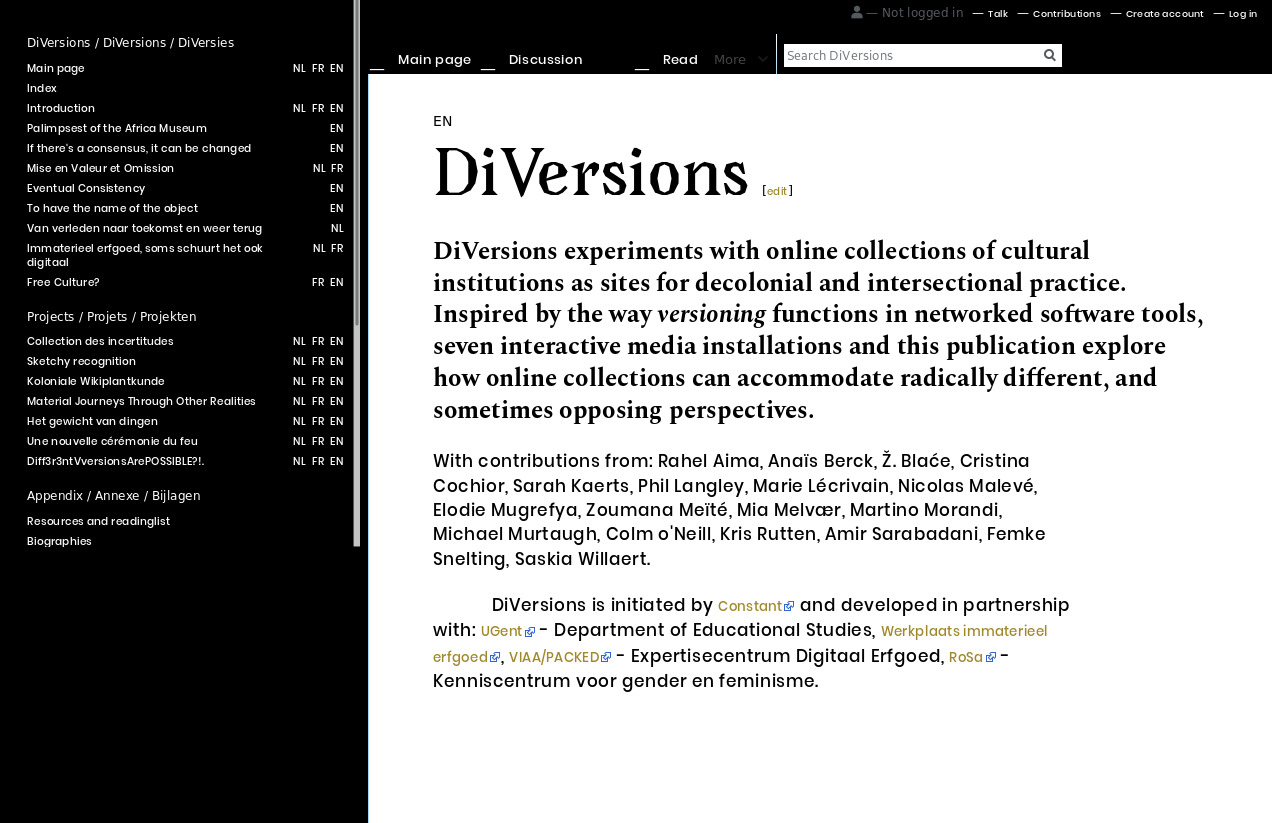Computational Culture, 7: Apps and Infrastructures (2019)
Filed under journal | Tags: · app, computation, data, infrastructure, law, software, software studies
A special issue of the journal, dedicated to the research of apps and infrastructure, with a special section on ‘Critical Approaches to Computational Law’ edited by Simon Yuill.
Contributions by Jeremy Wade Morris and Austin Morris; Carolin Gerlitz, Anne Helmond, Fernando van der Vlist, and Esther Weltevrede; Rowan Wilken, Jean Burgess, Kath Albury; Esther Weltevrede and Fieke Jansen; Michael Dieter and Nathaniel Tkacz; Stacy E. Wood; Johannes Paßmann; Théo Lepage-Richer; Mara Karagianni; Ezekiel Dixon-Roman, Ama Nyame-Mensah and Allison B. Russell; Winnie Soon; Matthias Plennert, Georg Glasze and Christoph Schlieder.
Edited by Carolin Gerlitz, Anne Helmond, David Nieborg, and Fernando van der Vlist
Published in October 2019
Open access
ISSN 2047-2390
DiVersions (2019) [NL, FR, EN]
Filed under wiki book | Tags: · archive, augmented reality, classification, collecting, cultural heritage, data, database, decolonization, interface, intersectionality, queer, software

“DiVersions experiments with online collections of cultural institutions as sites for decolonial and intersectional practice. Inspired by the way versioning functions in networked software tools, seven interactive media installations and this publication explore how online collections can accommodate radically different, and sometimes opposing perspectives.”
With contributions from: Rahel Aima, Anaïs Berck, Ž. Blaće, Cristina Cochior, Sarah Kaerts, Phil Langley, Marie Lécrivain, Nicolas Malevé, Elodie Mugrefya, Zoumana Meïté, Mia Melvær, Martino Morandi, Michael Murtaugh, Colm o’Neill, Kris Rutten, Amir Sarabadani, Femke Snelting, Saskia Willaert.
Edited by Constant (Elodie Mugrefya, Femke Snelting)
Publisher Constant, Brussels, October 2019
Free Art License 1.3
Matthew Plummer-Fernandez: The Art of Bots: A Practice-based Study of the Multiplicity, Entanglements and Figuration of Sociocomputational Assemblages (2018)
Filed under thesis | Tags: · algorithm, art, assemblage, bots, design, software, software art

“This thesis examines and analyses an emerging art practice known as artbots. Artbots are internet-based software applications that are imbued with character and configured to engage and entertain online audiences. This form of practice, and the community of practice leading it, was found to be underrepresented and misunderstood. I argue that this artform is original and warrants a more thorough understanding. This thesis develops a conceptual framework for understanding artbots that focuses on and enables questioning around pertinent aspects of the practice.
A wide range of literature was reviewed to provide theoretical underpinnings towards this framework, including literature on algorithm studies, science and technology studies, and software architecture. The devised framework examines artbot case studies through the notions of multiplicity, entanglement, and figuration, having understood artbots as heterogenous sociocomputational assemblages comprised of software components and human intraactivity.
The research followed a varied methodology that encompassed participant observation and my own practice-based experiments in producing artbots. The study resulted in several original works. In addition, a showcase titled Art of Bots brought together key proponents and artbots, further providing material that is analysed in this thesis. The study helped identify and discuss artbots with attention to how they utilise modular software components in novel arrangements, how normative human and nonhuman relations of interaction are being eschewed in favour of entangled interrelations, and how artbots challenge common narratives dictating technological constructs by inventing unique characters and figurations.”
Doctoral thesis
Publisher Goldsmiths, University of London, 2018
Creative Commons BY-NC-ND License
218 pages
PDF, PDF (10 MB)
ZIP (Supplemental material, 20 GB)

